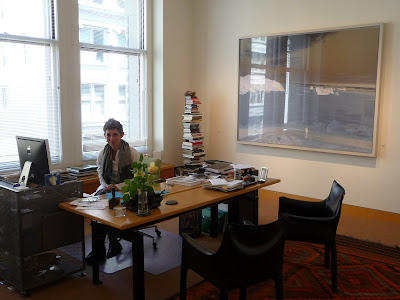 The Church of St. Francis of Assisi. Taos, New Mexico. Photograph by Ansel Adams. 1929.
The Church of St. Francis of Assisi. Taos, New Mexico. Photograph by Ansel Adams. 1929.
The Church of St. Francis of Assisi in Taos, New Mexico, completed around 1815, is relatively well known as the subject and inspiration for many artists and photographers, most famously Georgia O’Keeffe and Ansel Adams. It has also long been my favorite building in the world - perfect both as a piece of sculpture and a spiritual symbol. I thought of it recently as I drove by the carved form of Frank Gehry’s IAC building on the Westside Highway.
I was introduced to the church through photographs, but when I first traveled to New Mexico, originally to meet with Eliot Porter in Santa Fe, I went out of my way to visit it. The thing that immediately strikes you about the church is the handmade adobe construction which creates the feeling that it has risen from some giant potter’s wheel. If you walk around it today you are disheartened to find that power lines and encroaching buildings make it impossible to recreate the famous shots of the 1930s. But, of course, the fact that those images are not infinitely reproducible has made them all the more special.
Three images in particular have stood the test of time in my own mental image bank – the Adams, a Laura Gilpin, and a Paul Strand. Each, surprisingly, found different angles of what is actually the back view of the church and it’s uncharacteristically difficult for me to pick a favorite of the three. What do you think?
And if any readers have taken their own favorite picture of the church, please e-mail to: jd@danzigerprojects.com.
 The Church of St. Francis of Assisi. Taos, New Mexico. Photograph by Laura Gilpin. 1938.
The Church of St. Francis of Assisi. Taos, New Mexico. Photograph by Laura Gilpin. 1938.
 The Church of St. Francis of Assisi. Taos, New Mexico. Photograph by Paul Strand. 1932.
The Church of St. Francis of Assisi. Taos, New Mexico. Photograph by Paul Strand. 1932.

































